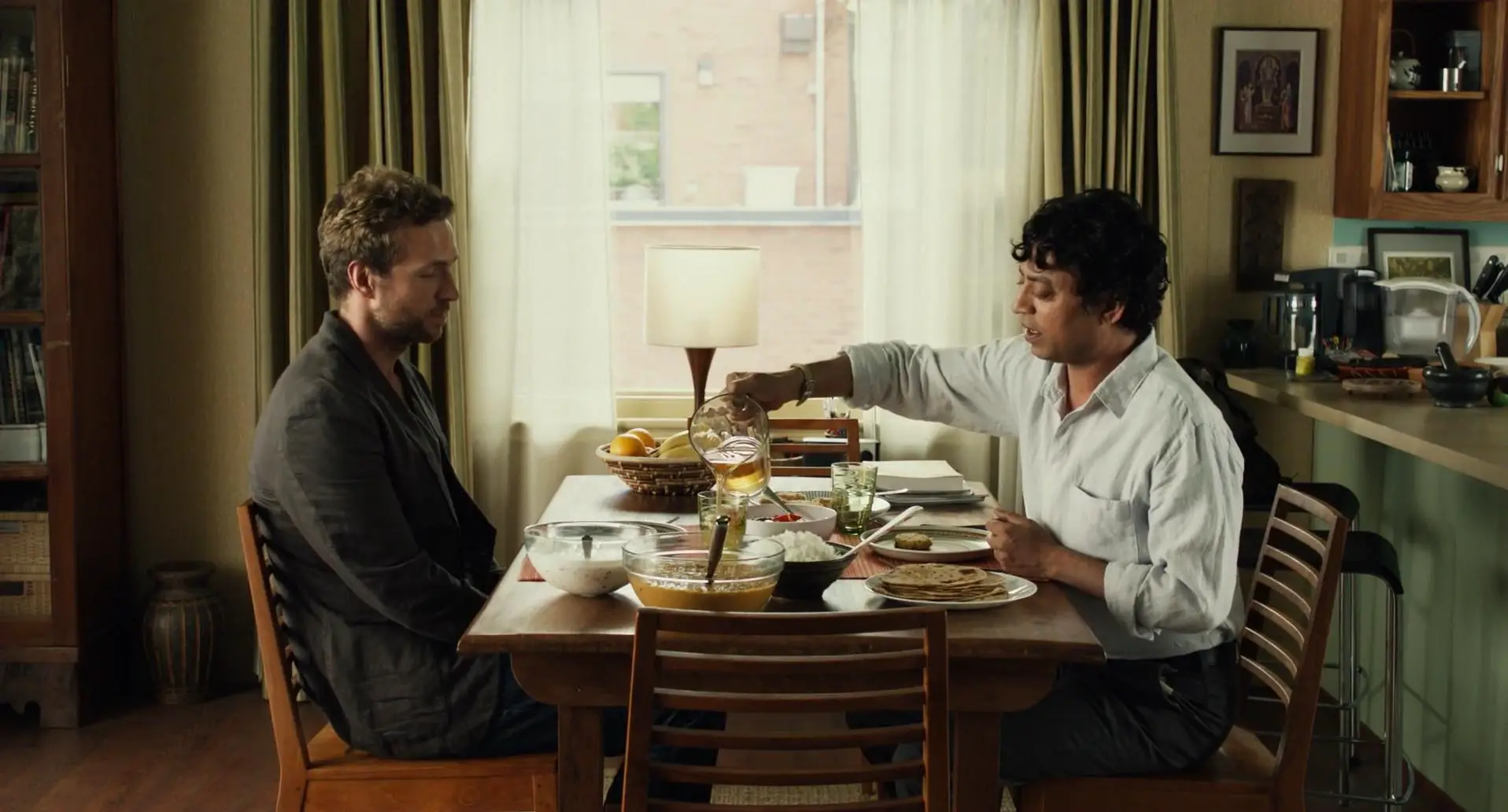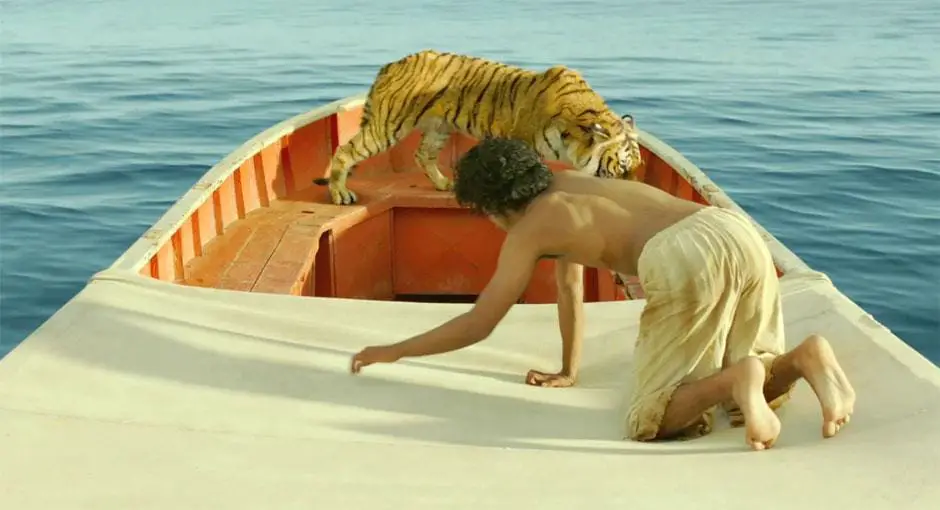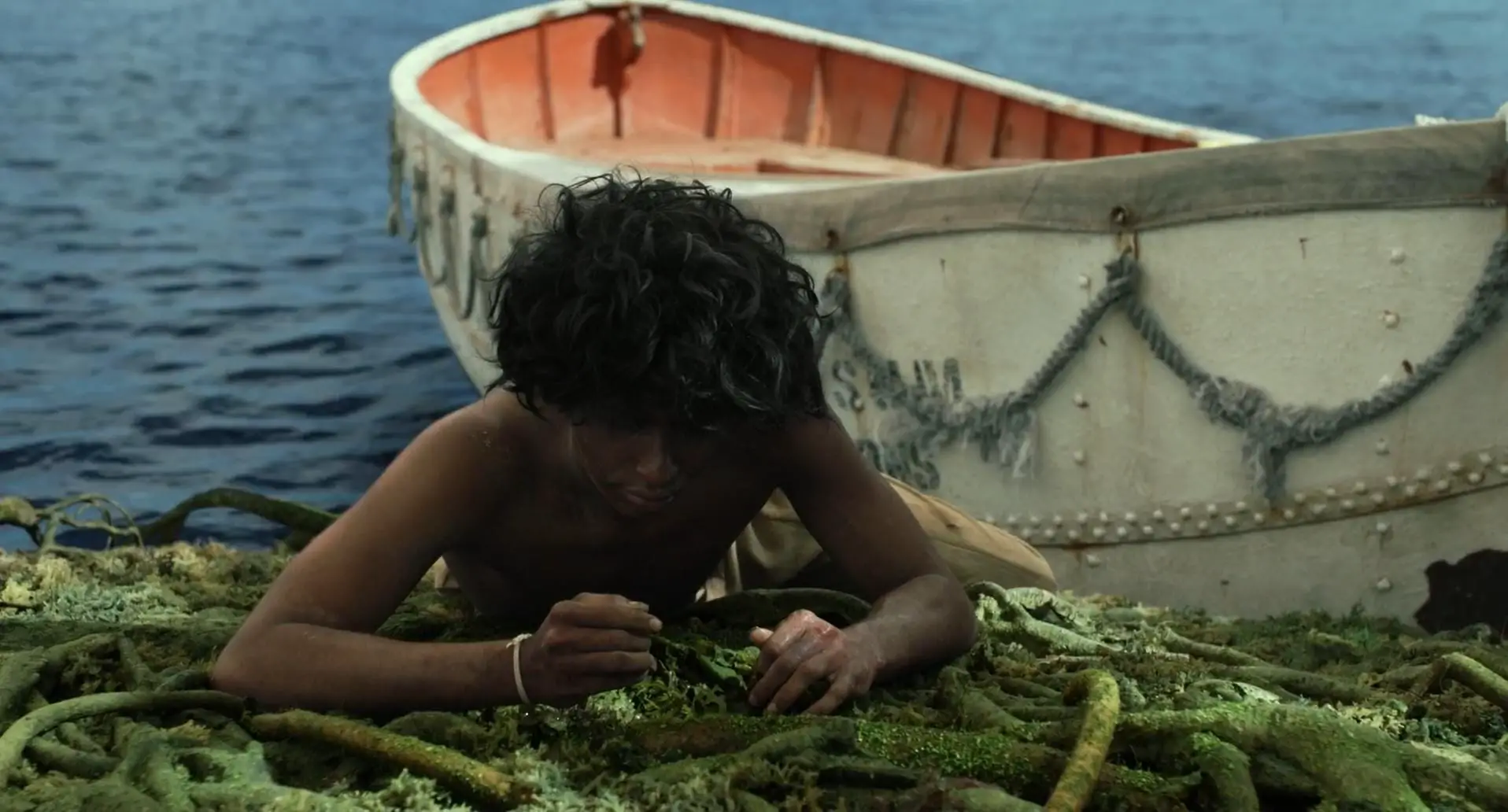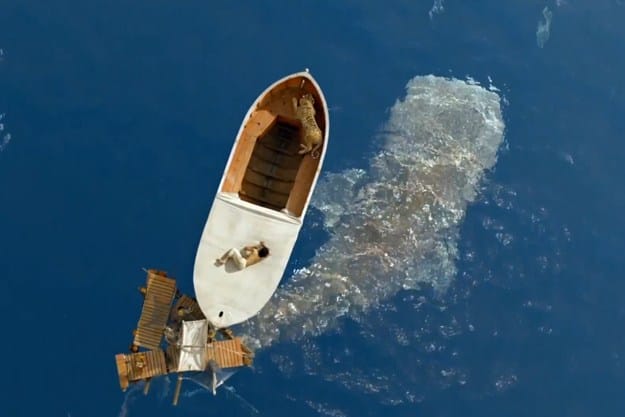Life Of Pi (2012): Where Is The Truth, And Where Is Fiction? The Meaning Of The Film Life Of Pi, Plot Analysis, The Explanation Of The Ending.
Country: USA, Taiwan, UK, Canada
Genre: drama, philosophical parable
Year of production: 2012
Directed by: Ang Lee
Actors: Suraj Sharma, Irrfan Khan, Ayush Tandon
Life of Pi is based on the novel of the same name by Jan Martell. This is a multi-layered book, which, depending on the reader’s worldview, can be considered both an adventure novel and a philosophical fairy tale.
The point of the film “Life of Pi” is that God is in each of us. And what to do with it, how to dispose of his gift, only the person himself decides.
What is the movie about
The picture begins with the fact that a young writer comes to a meeting with the owner of a small zoo. The elderly man, who is of Indian ethnicity, is named Pi: his father named him Pissin, after a swimming pool in Paris. He himself, having endured everything at school, called himself simply Pi – as one of the letters in the Greek alphabet.
 Rafe Spall as the young writer and Irrfan Khan as the elderly Pi. Frame from the film.
Rafe Spall as the young writer and Irrfan Khan as the elderly Pi. Frame from the film.
The life of young Pi from the very beginning was rather unusual: he lived in the family of a zookeeper and was keenly interested not only in animals, but also in different religions.
By the age of fifteen, the young man tried to find himself in Hinduism, and in Islam, and in Christianity, but none of the confessions gave him what he (rather unconsciously than consciously) was looking for. In the end, he came to an amazing compromise: practice all three religions at the same time.
One day, the father of the family decided to move to Canada, taking half of the zoo with him. When their ship went to the open sea, a storm began. Only Pi survived.
Having got out of the sinking ship onto the boat, the young man suddenly discovered that he was not alone: several animals were saved with him on the boat, among which was a Bengal tiger named Richard Parker.
All analyzes and reviews say that the film “Life of Pi” goes beyond all recognized standards. As such, there is, in fact, no plot: for almost two hours, the viewer sees a small boat drifting in the ocean, and watches how a young man tries to tame a tiger …
 Frame from the film.
Frame from the film.
Although by the end of the film it becomes clear that everything is just the opposite: it was Richard Parker, a tiger with a human nature, who was able to teach Pi a lot. If you do not dig into the philosophical jungle, then the idea of the film lies precisely in this.
But in this beautiful, bewitching and terrible film, there is also a hidden meaning.
Plot transcript
The main themes in the film “Life of Pi” are religion and faith. The protagonist is in the process of searching for God: Pi does not question the fact that he exists.
Drifting in the ocean in the company of Richard Parker, Pi suddenly realized why it was he who could not fully accept any of the confessions. He realized that all the established rules only prevent a person from knowing God. God is not in the church, Pi realized. He is everywhere and everywhere.
“Animal” version
The story of Pi’s miraculous rescue, in which he ended up on a boat with Richard Parker and other animals, is the version that we see throughout the film.
According to the first version, in the finale, Richard Parker went into the jungle without even looking back, which was the biggest tragedy for the main character. The love was not mutual: Pi loved the tiger, but he did not. Pi considered him a friend, and the tiger perceived him solely as a machine that gives him fish.
 Frame from the film.
Frame from the film.
“Human” version
When the young man was rescued by a passing ship, he was required to tell a different version of events, more “plausible”. Another story came from Pi’s mouth. And in this context, all the past events of the film “Life of Pi” began to seem much more gloomy.
In another version, there were no animals, but only people who turned into animals. They killed each other to survive. The events of this creepy story are more like a horror movie than an adventure fairy tale.
It is noteworthy that the second version seems no less (and possibly more) plausible than the version with the tiger. And the viewer, who seems to have taken off his rose-colored glasses, comes up with the idea that Pi, who survived all this horror and is in the stage of denial, invented Richard Parker and the events associated with him. Just so you don’t go crazy after everything you’ve seen.
An alternative version is much more terrible: at the end, when Pi, at the request of the rescuers, tells the “true story” of the shipwreck, the tiger also leaves without turning around.
 Frame from the film.
Frame from the film.
This is because it didn’t really exist. Richard Parker was only the personification of the essence of the protagonist in extreme conditions.
The deep meaning of the picture is that man needs God. But he remembers him only when trouble happens. And when the storm subsides in life and calm sets in, a person again forgets God.
What actually happened?
There is no evidence of the veracity of either version, it remains only to believe in the one that you like best. At the end, Pi asks the shocked writer which story he likes best. He replies that he prefers the version with the tiger.
This is where one of the meanings of the film lies: it is one thing to give preference to something, and quite another to believe in it as something truly existing.
In the book, writer Yann Martel doesn’t even hint which story is true. Nor does director Ang Lee. Readers and viewers must choose for themselves.
 Frame from the film.
Frame from the film.
The meaning of the ending
The meaning of the ending of the film “Life of Pi” will become clearer if you understand the symbols of the picture.
It is not by chance that the tiger’s name is Richard Parker: his name is a reference to the writer Edgar Allan Poe, who in 1838 wrote a book about the adventures of Arthur Gordon Pym. The story tells about people who, having survived a shipwreck, went crazy and ate their comrade. This comrade’s name was Richard Parker. After 50 years, the shipwreck happened in reality. Mad with hunger, the three survivors ate the fourth, a cabin boy named Richard Parker.
However, in Life of Pi, the opposite is true: Richard Parker is the only survivor of the boat.
The tiger symbolizes the protagonist’s ego. Therefore, he does not put an end to their relationship. At the end of the picture, he does not turn around, but only looks forward.
As a child, Pi read religious literature, but at the same time he studied books on leopard training. The following explanation suggests itself: religion teaches a person to tame passions. By training the tiger, Pi was trying to train himself, to subdue his inner beast.
The climax of the film “Life of Pi” is the moment when Pi gives up, gives up. But to give up means to die: there is an unpredictable ocean all around, a scorching sun overhead, and a wild tiger nearby … The explanation for this is as follows: the main character does not give up just like that – he surrenders to the mercy of God. In other words, Pi ended up with an unshakable faith in God.
When Pi surrendered to God, the tiger became helpless. If earlier, in good weather, Richard Parker dictated his conditions, then during a storm and acceptance of God, the tiger was pacified. From that moment on, Pi and Richard Parker became one. They ended up in the same boat, and the beast stopped threatening the life of the young man.
In one version of the movie Life of Pi, there was God. It is noteworthy that he was present in the version with Richard Parker and other animals, and not with people.
In the film, Pi, while on the ship, caused the storm himself. That’s right: when it began to rain, he raised his hands and, turning to the sky, shouted: “Harder! Stronger!”. Very soon he asked for forgiveness for this …
This moment is presented as a fantasy, but there is nothing supernatural in this: many of us are able to provoke a storm in our own (and others’) life – and regret it.
Life of Pi is a multifaceted film. The director, like the protagonist of the picture, offers the viewer to choose the one that they like best from the two versions of the finale. And you have to choose, guided not so much by the logic of the story (both versions are equally fantastic and at the same time plausible), but by your own worldview and life experience.







